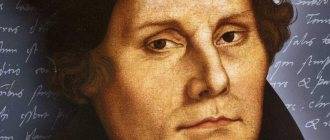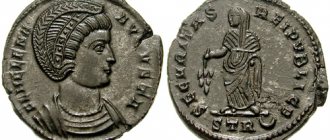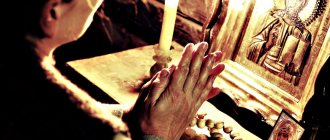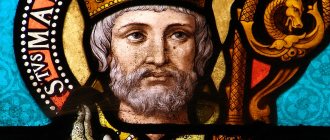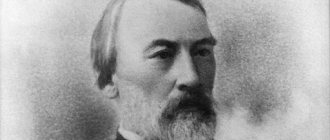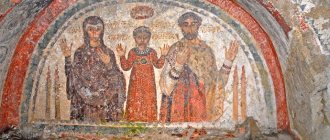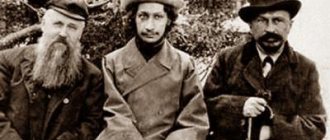Excommunication
95 theses travel throughout Germany within a few weeks. Luther denounces the vices of the church and denies the infallibility of the Pope. In 1519, he was anathematized by the head of Catholicism, Pope Leo X. The rebellious monk burns a bull (a document announcing excommunication) and publishes an appeal to the German nobles. He declared the fight against the Roman Church a matter for the entire German nation.
The German Emperor issues the Edict of Worms, which condemns Luther as a heretic. Luther was in danger of being killed by any zealous Catholic. The Saxon Elector stages the kidnapping of a rebellious monk. Martin Luther takes refuge in a castle, where he spends a long time. In the shelter, he translates the Bible into German.
Martin Luther - briefly
Near 500
years ago, a member of the Augustinian Order,
Martin Luther,
nailed his
famous 95 Theses
, where he briefly outlined his
views on religion.
Who was he himself before becoming the “father” of the Reformation? And what consequences did his challenge to the Catholic Church have for himself and for the faithful?
Childhood
Martin Luther's father, Hans
, was a simple miner.
At that time, working in copper mines was considered the only way to feed a family. He was married to a simple and calm girl, Margarita,
who gave him a son in January
1483
.
The boy received his name in honor of his grandfather and Saint Martin
, protector of the poor and disadvantaged. In connection with the birth of a child, the family moves to the town of Mansfeld. It was here that Hans became rich and became the owner of foundries. The family's wealth did not in any way affect the foundations and family traditions. Children were raised in severity and modesty, and idleness was never held in high esteem in Luther's family. It is known that Martin even worked part-time with friends by participating in religious chants.
Training a future theologian
Wealthy burghers, including Hans Luther, sought to give their sons a good education, mainly in law. Before starting to study law, one had to complete the course of the “seven liberal arts”
.
In 1505
, having fulfilled his father's hopes, Martin received
a Master of Arts degree
and began to study law in Erfruit. However, the father's joy for his son's success turned out to be short-lived. Martin's piety prompted him to join the Augustinian monastic order. Members of the order were very educated people, constantly in search of knowledge. To comply with the order, Martin continues his education at the University of Wittenberg, where he soon receives a doctorate in theology. While teaching and studying the religious works of preachers, Martin begins a search for the true sources of divine mercy. Each time, thoughts about the sinfulness of faith itself haunted the theologian. And they soon found their confirmation.
Martin Luther - fighter for the true faith
The beginning 16th
century in Medieval Europe was marked
by a crisis in the Catholic Church.
Distrust and anti-church sentiments grew among believers.
Increasingly, people began to encounter the immorality and shamelessness of clergy, with huge church extortions and bribes, which were mainly used for feasts and hunting. Even the Pope himself did not neglect this.
What was most outraged was the sale of papal letters
(indulgences)
for the remission of past and future sins.
In October 1517
, construction began on a pompous church in the Vatican, which required huge investments. The Pope, not wanting to spend church “savings,” issues a decree on open sales of indulgences. On every corner one could meet monks offering to save their souls for a coin. The open disregard for the true faith outraged Martin Luther.
At the end of October
1517
, Germany was rocked by an open accusation against the Catholic Church, which went down in history as
Luther’s “95 Theses.”
This date is associated with the beginning of the medieval Reformation (the struggle for the reconstruction of the church) and the emergence of a new religious movement - Protestantism.
Martin Luther was excommunicated for his insolent disobedience
which in those days was considered similar to death. The papal decree received by the Wittenberg theologian was publicly burned in the courtyard of his native university. So Luther made it clear that he would not give up his views even under the threat of death.
IN 1521
year,
Charles V
(Holy Roman Emperor), in support of the Pope and the Catholic Church, summoned Luther to trial in Worms.
Close friends and supporters feared for his life and tried in every possible way to dissuade him from the trip. Martin Luther could not renounce his teachings, thereby betraying the believers who followed him. This courageous and persistent man appeared before the emperor and the highest clergy at the imperial court. Charles V demanded that he submit to the Catholic Church and take back his accusations. Looking into the eyes of the emperor, Luther confirmed his protest by uttering the famous words: “On this I stand. And I can’t do otherwise. God help me. Amen". There was silence in the hall. Everyone knew that shortly before this event, Jan Hus, a supporter of the Reformation, was killed in the Czech Republic. However, Luther was hidden in the fortress of the Saxon prince Frederick, where he was translating the Bible from Latin into German. So he tried to make the Bible accessible to representatives of all levels of German society. Martin Luther's teaching was so simple and sincere that it immediately resonated with the people. After all, Luther believed that only through his own faith can a person achieve the salvation of his soul.
This does not require money or clergy. Clergy should only interpret the holy books to believers and be mentors in religious life. The church was not supposed to own vast lands and wealth, the clergy were to become like secular princes. Services and rituals must be cheap and accessible to everyone.
Subsequently, Lutheranism (one of the movements in Protestantism)
spread far beyond the borders of German lands.
Personal life
Serving God, as Martin Luther believed, could not become an obstacle to procreation
.
Celibacy (vow of celibacy), according to his teaching, did not correspond to the word of the Lord, which called to be fruitful and multiply. Based on this, Luther
married a nun, Katharina von Bora,
in 1525 It is noteworthy that Luther himself supported the escape from the monastery of a girl who was inspired by his teaching.
6 children
were born , but nothing is known about their further fate. Katarina turned out to be not only an ardent supporter of his religious views, but also a caring, loving wife. In the last years of his life, Luther was overcome by illness, but the woman was always there, trying to serve and cheer up her husband to the last.
February 18 , 1546
, the great reformer passed away.
He was buried with honors near the University of Wittenberg.
New era
However, Martin Luther's theses and speeches lay on fertile soil. The socio-economic development of Europe was hampered by the global dominance of the Catholic Church. Luther found a considerable number of followers and support from the bourgeoisie. The Reformation movement was picked up in many German states, and subsequently spread throughout Europe.
The renewal begun by Luther split the united Roman Church. This marked the beginning of the era of capitalism. Protestants, for whom work and enrichment became “God’s grace,” gave impetus to the development of exact sciences and entrepreneurship. And the European countries, where the new church took a dominant position, quickly became one of the leading world powers.
Childhood and youth
Martin Luther was born on November 10, 1483 in Eisleben , Saxony. His father was Hans Luther , who in the first half of his life was a peasant and worked in the mines, but, moving to Mansfeld after the birth of his son, became a fairly wealthy citizen. He died in 1530, leaving his descendants an impressive sum, with which it was possible to buy an estate with a large area of land. Martin's mother's name was Margarita .
Portrait of Parents (1527)
Antisemitism
From 1533 until his death in 1546, Luther served as dean of theology at the University of Wittenberg. During this time, he suffered from many illnesses, including arthritis, heart problems and digestive disorders. The fugitive's physical pain and emotional stress may have been reflected in his writings. Some of the works contained harsh and offensive language against certain sections of society, particularly Jews and, to a lesser extent, Muslims. Luther's anti-Semitism is on full display in his treatise The Jews and Their Lies.
No. 6. He wrote the large and small Catechism.
A catechism is a summary of doctrinal principles. In April 1529, Luther's Large Catechism was published. It was especially addressed to clergymen to assist them in teaching their parishioners. That same year, Luther also published the Small Catechism, which was a summary of the Large Catechism and was intended for the people themselves. Martin Luther's Catechisms provide easy-to-understand material on the Ten Commandments; Apostolic Creed; o The Lord's Prayer; The Sacrament of Holy Baptism; o Key management; and about the Sacrament of the Eucharist. Luther included questions and answers in the catechism so that faith would be understood and not robbed. The Small Catechism has been particularly effective in helping parents teach their children. Likewise, the Larger Catechism has been effective for pastors. The Small Catechism, which has a reputation as a model of clear religious teaching, is still widely used in Lutheran churches as part of youth education and confirmation.
Martin Luther's Small Catechism
Personal life
Martin Luther was convinced that God cannot prohibit all people from loving and prolonging their race. In 1525 he married a girl who was a former nun. Katharina von Bora got married, although she took a vow of celibacy when she was 8 years old. During their life together, they had 6 children , they lived simply and without frills, but their home was always open to the needy and homeless.
Katharina von Bora
Disappointment in Rome
At the age of 27, Luther received the opportunity to be a delegate to a conference of the Catholic Church in Rome. He left even more disappointed and discouraged by the immorality and depravity of Catholic priests. Upon his return to Germany, he enrolled at the University of Wittenberg in an attempt to quell his spiritual turmoil. He excelled in his studies and received his doctorate, becoming a professor of theology at the university (known today as Martin Luther University Halle-Wittenberg). By studying the Holy Scriptures, Luther eventually gained religious enlightenment. Beginning in 1513, while preparing his lectures, Luther read the first line of Psalm 23, which Christ cried out in his cry for mercy on the cross, a cry similar to Luther's own disillusionment with God and religion. Two years later, while preparing a lecture on Paul's letter to the Romans, he read: "The righteous shall live by faith." He pondered this statement for some time. Finally, he realized that the key to spiritual salvation is not to fear God and not to be enslaved by religious dogma, but to believe that only faith will bring salvation. This period marked great changes in his life and marked the beginning of the Reformation.
Lutheran Church
Although Luther was still under threat of arrest, he returned to the Wittenberg Castle church in Eisenach in May 1522 to organize a new Lutheran church. He gained many followers, and the Lutheran Church also received considerable support from the German princes. When the peasant revolt began in 1524, Luther condemned the peasants and sided with the rulers on whom the growth of his church depended. Thousands of peasants were killed, but the Lutheran Church grew over the years.
In 1525, Luther married Katharina von Bora, a former nun who left the monastery and took refuge in Wittenberg. Born into a noble family that had fallen on hard times, Katharina was sent to a convent at the age of five. She and several other reform nuns decided to escape the rigors of monastic life, and after smuggling out a letter asking for help from the Lutherans, Luther hatched a daring plot. With the help of a fishmonger, Luther ordered the rebel nuns to hide in barrels of herring, which were smuggled out of the monastery after dark, a crime punishable by death. Luther made sure that all the women found work or marriage prospects, with the exception of the strong-willed Katharina, who refused all suitors except Luther himself. The scandalous marriage of a disgraced monk to a disgraced nun may have tarnished the reform movement somewhat, but over the next few years the couple prospered and had six children. Katarina proved herself a more than capable wife and ally, as she greatly increased their family's wealth by investing wisely in farms, orchards, and a brewery. She also converted the former convent into a hostel and meeting center for Reformation activists. Luther later said of his marriage, “I made the angels laugh and the devils cry.” Unusual for his time, Luther in his will entrusted Katharina as his only heir and guardian of his children.
Monk
In July 1505, Luther had a life-changing experience that set him on a new path: becoming a monk. Finding himself in a terrible thunderstorm, where he feared for his life, Luther appealed to Saint Anne, the patroness of miners: “Save me, Saint Anne, and I will become a monk!” The storm subsided and he was saved. Most historians believe that this was not a spontaneous act, but an idea already formulated in Luther's mind. The decision to become a monk was difficult and greatly disappointed his father, but he felt he had to keep his promise. Luther was also motivated by the fear of hell and the wrath of God and felt that life in a monastery would help him find salvation. The first few years of monastic life were difficult for Luther, as he did not find the religious enlightenment he was looking for. The mentor told him to focus his life solely on Jesus Christ and this would later give him the guidance he was looking for.
